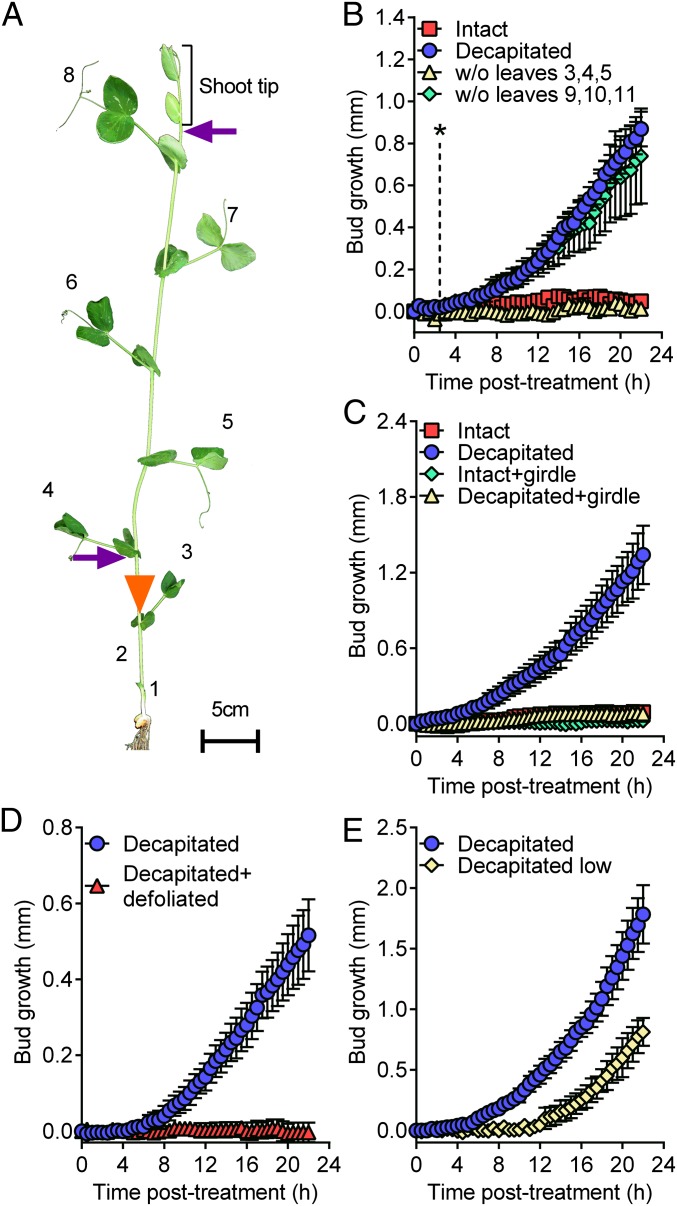Fig. 1.
Mature leaves are the source of the rapid decapitation-induced signal. (A) Positions of leaves (numbered), girdle (5) (triangle), and sites of decapitation (B–E, upper arrow, and E, lower arrow) used in this study. (B) Decapitation as well as removal of expanding leaves (node 9–11) within the shoot tip, but not the mature (node 3–5) leaves, induced rapid bud release at node 2; n = 4. The dotted line with an asterisk indicates the time at which the growth kinetics between buds of intact and decapitated plants became significantly different according to nonoverlapping 95% confidence intervals between the two treatments after an ANOVA analysis of data from three separate experiments, n = 11–12. (C) Stem girdling below node 4 prevented rapid bud release. n = 4. (D) Defoliating plants from nodes 3 to 8 prevented the decapitation-induced rapid bud release. n = 3 or 4. (E) Decapitation of the plants low on the stem delayed bud release. n = 4. All data are mean ± SEM.

